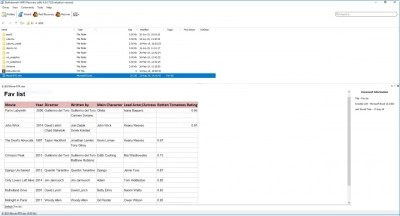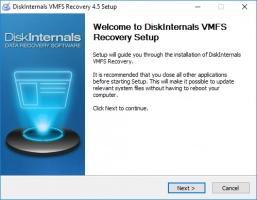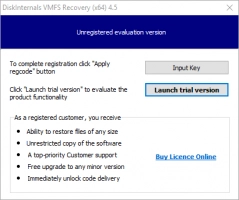What Is a VM Snapshot? Definition, Benefits, Limits & Best Practices
Whether you're a seasoned IT professional or a newcomer to the world of virtualization, understanding what VM snapshots are and how they function can significantly enhance your ability to manage virtual environments. In this comprehensive guide, we'll explore the fundamentals of VM snapshots, delve into their advantages and limitations, and offer insights on best practices for leveraging them effectively. Embark on this exploration to gain a robust understanding of one of virtualization's most potent capabilities.
VM Snapshot Fundamentals
In the realm of virtualization, VM snapshots are indispensable. They serve as a powerful tool that allows system administrators and IT professionals to manage and maintain virtual machines with greater flexibility and control. Let's delve into the core components that make VM snapshots a fundamental aspect of virtualization.
Point-in-Time Copy of Memory, Disk & Settings
A VM snapshot is essentially a point-in-time copy of a virtual machine's state, which includes its memory, disk, and settings. Here's what that entails:
- Memory: When you take a snapshot, it captures the entire state of the VM's memory at that specific moment. This means that, should you revert to this snapshot, the VM resumes exactly where it left off, with all processes intact and running as they were.
- Disk: Snapshots also record the virtual machine's disk state. This involves capturing the entire data structure from the virtual disks, ensuring that any files, directories, or data present at the time of the snapshot are preserved.
- Settings: VM snapshots encompass the configuration settings of the virtual instance. These settings can include hardware configurations, network settings, and any other specific parameters configured at that point in time.
By creating this holistic snapshot, users can return to a stable state when necessary, making troubleshooting and updates far less risky.
How Snapshots Work: Delta Disks, .vmsn & .vmdk Files
The mechanism of snapshots revolves around maintaining data consistency through a series of differential files and precise documentation:
- Delta Disks: Instead of copying the entire disk image, a snapshot relies on delta disks or "difference disks" to store only the changes made after the snapshot is taken. This optimizes storage space and improves efficiency, as only new writes are logged, leaving the original disk image untouched.
- .vmsn Files: These files capture the memory state of the VM. A .vmsn file records the live memory of a virtual machine at the time of the snapshot. It's crucial for ensuring that all running processes and application states can be accurately restored.
- .vmdk Files: These are virtual disk files used by VMware. When a snapshot is taken, a delta .vmdk file is created alongside the original. This delta file acts like an incremental log, capturing only changes that occur after the snapshot. Thus, when reverting to a snapshot, the system references both the original and delta files to reconstruct the VM's state.
Insight Box: VM Snapshot in 60 Seconds
Purpose, Storage, Benefits & Limitations at a Glance
Grasping the essentials of VM snapshots is pivotal to leveraging their full potential. Here's a quick overview of their purpose, storage mechanics, benefits, and limitations, all condensed into a minute:
Purpose: VM snapshots enable users to save the exact state of a virtual machine at a specific point in time. This capability is particularly useful for testing, development, and recovery operations, as it allows for seamless rollbacks to previous states if needed.
Storage: Snapshots employ delta disks to efficiently manage storage by recording only the changes made after the snapshot is taken. This means the original disk remains unaltered, and incremental changes are stored separately, optimizing storage usage while preserving data integrity.
Benefits:
- Ease of Recovery: Instantly revert to a previous state in case of errors or system failures.
- Simplified Testing: Experiment with software or configurations without risk, knowing you can easily restore to a snapshot.
- Operational Continuity: Maintain uptime by swiftly addressing issues using snapshot restores.
Limitations:
- Resource Intensity: Large volumes of snapshots can degrade performance by consuming storage and impacting input/output operations.
- Not a Backup Replacement: Snapshots are incremental and do not replace comprehensive backup solutions, as they depend on the base image remaining intact.
Top Benefits of Using VM Snapshots
The strategic use of VM snapshots can significantly enhance the management of virtual environments. Here, we explore in detail how snapshots provide invaluable advantages across several key areas.
Quick Recovery & Rollback
Snapshots are quintessential for ensuring quick recovery in the face of unforeseen issues:
- Instant Restoration: With snapshots, administrators have the power to immediately revert a virtual machine to a previous, functional state. This is particularly beneficial when deploying new applications or updates that might introduce instability. Instead of troubleshooting complex problems or rolling back changes manually, a simple revert to the last known good snapshot can save hours of downtime and effort.
- Disaster Recovery: During critical failure events, VM snapshots serve as a reliable recovery method. By maintaining snapshots at regular intervals, businesses can ensure minimal data loss and operational disruption, because they can quickly restore systems to a recent, stable state.
Safe Testing, Patching, Dev/QA Experimentation
Snapshots significantly bolster development, testing, and experimentation effectiveness:
- Risk-Free Experimentation: Developers and QA teams often need to test new applications, patches, and system configurations. VM snapshots allow these tests to be conducted in a risk-free manner. If something goes awry, reverting to a snapshot can undo changes within moments, safeguarding the underlying systems and data.
- Patch and Update Testing: Before deploying a patch or update to production, using a snapshot to create a testing environment ensures that issues can be caught early and corrected. This way, administrators can confirm that the patch won't introduce new problems or conflicts, ultimately ensuring smoother operations when the update is rolled out to the entire system.
Minimizing Downtime During Maintenance
Efficient maintenance of systems is paramount, and VM snapshots play a pivotal role in minimizing downtime:
- Maintenance Planning: During planned maintenance periods, having a snapshot as a fallback option is crucial. If an update or reconfiguration doesn't go as planned, reverting to a snapshot ensures that systems can continue to operate without extended interruptions. This is particularly important for environments with high availability requirements, where every second of downtime can translate into significant financial losses.
- Time-Saving Efficiency: Snapshots save time by reducing the need for meticulous pre-maintenance checks and detailed rollback procedures. With a quick snapshot revert, systems can be quickly restored to operational status without labor-intensive troubleshooting or reconstruction.
Limitations and Risks You Must Know
While VM snapshots provide substantial advantages in managing virtual environments, it's also crucial to understand their limitations and associated risks. Being aware of these can help you use snapshots more effectively and avoid potential pitfalls.
Snapshots Are Not Backups
One of the most critical misconceptions about snapshots is that they can replace a robust backup strategy:
- Temporary State Preservation: Snapshots capture the state of a VM at a specific moment, but they are not independent copies of your data. They depend on the original VM disk files to remain intact and accessible. Therefore, if the base disk becomes corrupted or is deleted, the snapshot becomes unusable.
- Backup Strategy Supplement: While snapshots provide fast rollback options, they should complement, not replace, regular backups. Backups are designed to be stored independently, often in secure or offsite locations, providing a level of data security and disaster recovery that snapshots alone cannot achieve.
Storage Growth, Chain Complexity & Performance Hit
Snapshots can also lead to complications in storage management and system performance:
- Storage Usage: Every change made to a VM after taking a snapshot is stored in delta files, which accumulate over time. As these files grow, they consume additional storage, which can lead to capacity issues if not managed properly.
- Chain Complexity: When multiple snapshots are taken, they form a chain of dependencies. This increases the complexity of the snapshot management process. Longer snapshot chains can exacerbate storage demands and complicate recovery processes.
- Performance Impact: Snapshots can degrade system performance. The existence of delta files means that read/write operations must reference multiple files, increasing I/O operations and potentially slowing down the virtual machine.
Risk of Corruption if Left for Too Long
Snapshots are best utilized as short-term tools, and prolonged reliance on them can introduce risks:
- Data Integrity Risks: If snapshots are left for extended periods, the likelihood of corruption increases. This is due to the cumulative complexity of managing lengthy chains of snapshot data, which can become susceptible to errors or faults.
- Administrative Oversight: Maintaining snapshots requires ongoing management. Old or orphaned snapshots can clutter the storage environment, complicating administrative tasks and increasing the risk of operational mismanagement or oversight.
Real-World Examples & Workflows
Understanding how VM snapshots are applied in real-world scenarios can provide valuable insights into their practical benefits and effective usage.
Reverting After a Failed Windows Update
Windows updates, while essential for security and functionality, occasionally introduce unforeseen issues. VM snapshots offer a failsafe mechanism to manage such situations:
- Preparation for Update: Before applying a critical Windows update, an administrator takes a snapshot of the VM. This snapshot captures the VM's current operational state, including its memory, disk, and settings.
- Post-Update Monitoring: After the update is installed, the system is monitored for stability and performance. If any issues arise—such as application crashes, system instability, or reduced performance—the snapshot provides an immediate solution.
- Reversion Process: Upon identifying update-related issues, the administrator can swiftly revert the VM to the pre-update snapshot. This reversion restores the system to its previous operational status, effectively neutralizing the problems introduced by the update without manually troubleshooting the system.
This workflow ensures minimal downtime and business continuity, safeguarding the environment from disruptive update failures.
Protecting a Database During Schema Migration
Database schema migrations are critical operations that can impact data integrity. VM snapshots provide a layer of protection during such high-stakes modifications:
- Pre-Migration Snapshot: Prior to initiating the schema migration, a snapshot is taken. This snapshot encompasses the database’s current disk state and settings, acting as a checkpoint before any changes are applied.
- Schema Migration Execution: With the snapshot in place, developers or database administrators carry out the schema migration. They closely monitor the migration process to ensure all changes are applied as intended and that no data is lost or corrupted.
- Risk Mitigation: If the migration encounters errors or results in unexpected behavior, the administrator can revert to the snapshot, ensuring that the database returns to its original, stable state prior to migration. This allows for the identification and correction of issues without irreversible impact.
Managing Snapshots in VMware vSphere
Effective management of VM snapshots within VMware vSphere is crucial for maintaining optimal virtual infrastructure performance and reliability. Here’s how you can handle snapshots efficiently:
Creating, Reverting, Deleting & Consolidating
- Creating Snapshots: Within vSphere, creating a snapshot involves selecting the desired virtual machine and using the "Take Snapshot" option. This action captures the current state of the VM, including memory and disk states.
- Reverting to a Snapshot: If you need to return a VM to a previous state, you can select the "Revert to Snapshot" option. This instantly restores the VM’s state to the chosen snapshot, erasing any changes made since the snapshot was taken.
- Deleting Snapshots: Over time, accumulated snapshots can occupy significant storage space. Deleting unneeded snapshots is essential for maintaining storage efficiency. Use the "Delete Snapshot" function to remove selected snapshots from the VM.
- Consolidating Snapshots: When snapshots are deleted or committed back to the base disk, sometimes delta files are not automatically merged due to I/O constraints or errors. The "Consolidate" option ensures that all snapshot data is merged into the original disk files, maintaining data integrity and freeing up space.
Recommended Limits: Number, Age, Size
- Number of Snapshots: VMware recommends keeping the number of snapshots to a minimum due to the performance impact and increased risk of corruption. A guideline is to maintain no more than 2-3 snapshots at any given time.
- Age of Snapshots: Snapshots should be a short-term solution. It's advised to avoid keeping snapshots for more than 72 hours to minimize risks associated with data corruption and to prevent performance degradation.
- Size of Snapshots: Snapshots can grow significantly as they accumulate changes. Monitoring the size of snapshots is important, as large snapshot files can strain storage resources and impact system performance. Regularly assess and manage snapshot storage utilization.
PowerCLI One-Liners for Automation
PowerCLI, VMware's command-line interface tool, offers powerful automation capabilities for managing snapshots:
- Create a Snapshot:
New-Snapshot -VM"VM_Name"-Name"Snapshot_Name"-Description"Description of Snapshot"- Revert to a Snapshot:
Get-VM "VM_Name"| Get-Snapshot -Name"Snapshot_Name"| Set-VM -Snapshot-RunAsync- Delete a Snapshot:
Get-VM "VM_Name"| Get-Snapshot -Name"Snapshot_Name"| Remove-Snapshot
- Consolidate Snapshots:
Get-VM "VM_Name"| Get-Snapshot | Remove-Snapshot -Confirm:$false-RunAsyncSnapshots in Hyper-V and Other Platforms
VM snapshots are a versatile feature that transcends various virtualization platforms, each with its specific terminology and tools. Here’s a look into how snapshots function across platforms like Hyper-V and others.
Checkpoint vs Snapshot Terminology
While the core concept is similar, different platforms may use different terminologies:
Hyper-V (Microsoft): In Hyper-V, the term Checkpoint is used instead of Snapshot. Checkpoints serve the same purpose as snapshots, allowing you to capture the state, data, and hardware configuration of a VM at a specific moment.
- Standard Checkpoints: Capture the current state and data of running VM applications, and are typically used for development and testing environments.
- Production Checkpoints: These provide a backup-consistent, application-aware snapshot of a VM, ideal for production environments as they use VSS (Volume Shadow Copy Service) for Windows VMs or file system freeze for Linux VMs.
Other Platforms: Various terms might be used, but the concept generally remains consistent—creating a point-in-time copy of a VM's state for rollback or testing purposes.
CLI / PowerShell Commands
Administering snapshots or checkpoints can be efficiently executed via command-line tools or PowerShell:
Hyper-V PowerShell Commands
- Creating a Checkpoint:
Checkpoint-VM-Name "VM_Name"-SnapshotName "Checkpoint_Name"- Reverting to a Checkpoint:
Restore-VMSnapshot-Name "Checkpoint_Name"-VMName "VM_Name"- Deleting a Checkpoint:
Remove-VMSnapshot-Name "Checkpoint_Name"-VMName "VM_Name"KVM/Libvirt:
- Create a Snapshot:
virsh snapshot-create-as VM_Name Snapshot_Name
- Revert to a Snapshot:
virsh snapshot-revert VM_Name Snapshot_Name
- Delete a Snapshot:
virsh snapshot-delete VM_Name Snapshot_NameCombining Snapshots and Backups for Robust DR
Creating a robust disaster recovery (DR) strategy involves an effective combination of snapshots and backups. This approach ensures not only quick recovery but also long-term data integrity and availability. Here's how to integrate these elements for optimal results.
Workflow: Snapshot → Test → Backup → Replicate
To derive the maximum benefit from snapshots and backups, they should be woven into a comprehensive workflow:
- Snapshot: Begin by taking a snapshot of your VM to capture its current state, including memory, disk, and configuration settings. This provides an immediate recovery point that can be used if changes need to be rolled back quickly.
- Test: Utilize the snapshot to conduct tests in a controlled environment, verifying that new updates or configurations work as expected without affecting live systems.
- Backup: Once the system is tested and verified, proceed to create a full backup. Unlike snapshots, backups are independent and are stored offsite or in a secure location, ensuring long-term protection of your data against failures or disasters.
- Replicate: Replicate the backup to another site or cloud service to safeguard against site-specific disasters. This ensures data availability even in extreme circumstances.
This workflow not only provides quick rollback options but also secures your systems through thorough, long-term data storage solutions.
RPO/RTO Considerations
Understanding and defining RPO (Recovery Point Objective) and RTO (Recovery Time Objective) are critical in configuring your DR strategy:
- Recovery Point Objective (RPO): This refers to the maximum acceptable amount of data loss measured in time. Snapshots can reduce RPO by providing frequent, incremental recovery points. However, to minimize RPO, regular and automated backups are essential to ensure the most recent data states are preserved.
- Recovery Time Objective (RTO): This defines the maximum acceptable amount of time to restore data or a service after a failure. Snapshots contribute to reducing RTO by allowing systems to revert quickly to a stable state. However, comprehensive recovery might still depend on full backups, especially in cases of data corruption or hardware failures.
Recovering Damaged Snapshots with DiskInternals
VM snapshots are invaluable for capturing and reverting virtual machine states, but they can sometimes fall prey to issues, particularly with VMFS (VMware File System) corruption. Here’s how you can use tools like DiskInternals to recover damaged snapshots effectively.
When Snapshots Fail: VMFS Corruption Scenarios
Snapshot failures often stem from underlying VMFS corruption, which can occur due to:
- Unexpected Power Loss: Abrupt power interruptions can leave file systems in an inconsistent state, affecting snapshots and other data.
- Storage Hardware Failures: Disk failures in the storage array may corrupt the file system, leading to snapshot inaccessibility.
- Software Bugs or Misconfigurations: Improper software versions or configurations might occasionally introduce VMFS corruption.
Dealing with a corrupted snapshot can severely impact data integrity and availability, necessitating robust recovery strategies.
Step-by-Step Recovery Guide with Screenshots
Recovering damaged snapshots using DiskInternals involves several steps. Here's a detailed guide to help you through the process:
- Step 1: Launch DiskInternals VMDK Recovery
Open DiskInternals VMDK Recovery software. This tool specializes in extracting and restoring data from damaged or corrupted VMware disk files.
- Step 2: Locate the Corrupted Snapshot

Use the interface to navigate to the corrupted snapshot on the VMFS disk. DiskInternals will scan the disk for recoverable files and snapshots.
- Step 3: Analyze the Data
Once the scan is complete, review the list of found files and snapshots. DiskInternals will provide a preview of recoverable data to ensure accuracy.
- Step 4: Recover the Snapshot
Select the damaged snapshot(s) and initiate the recovery process. Choose a safe location to save the recovered files—ideally off the compromised storage path.
- Step 5: Verify Integrity
After recovery, test the snapshot’s integrity by attempting to load it within VMware. Ensuring functionality confirms successful recovery.
Conclusion: Use Snapshots Wisely, Back Up Religiously
Snapshots are a powerful tool in any virtualized environment, offering quick and easy rollback options that can save time and effort during testing, development, and after unexpected failures. However, they come with limitations and should be used judiciously to avoid performance issues and data corruption risks.
While snapshots provide valuable short-term recovery points, they should never be mistaken for complete backup solutions. Regular, comprehensive backups remain the cornerstone of a robust disaster recovery strategy, ensuring data is preserved independently of the VM state and is accessible even in worst-case scenarios.
By integrating both snapshots and backups into your data protection and recovery plans, you can leverage the strengths of each to maintain operational resilience, minimize downtime, and safeguard your data assets. Always remember—use snapshots wisely, but back up religiously to ensure comprehensive coverage for all your virtual environments.
FAQ
- How many snapshots are safe to keep?
The optimal number of snapshots varies depending on the system and its specific use case. Generally, maintaining a small number of snapshots (around 2-3) is recommended to ensure optimal performance. However, some systems may handle a larger number (ranging from hundreds to thousands) effectively, depending on their unique requirements and capabilities.
- Do snapshots include memory?
Certainly, snapshots can encompass memory. For instance, VMware snapshots offer the option to capture the memory state of a virtual machine at the time the snapshot is taken, enabling a complete rollback to the precise state, including memory contents. On the other hand, snapshots that exclude memory are also available; these focus solely on the disk state and are typically quicker to create and restore.
- Can I move snapshots to another datastore?
Yes, it is possible to move virtual machine snapshots to a different datastore. You can do this by using Storage vMotion or cloning the virtual machine with a specific snapshot. However, there are a few things to consider when moving snapshots, such as the impact on virtual machine state and remote site recovery.
- Why is my VM slow after taking a snapshot?A virtual machine (VM) can experience performance degradation after taking a snapshot due to how snapshots impact disk I/O operations. When a snapshot is taken, the original disk image is frozen, and subsequent writes go to a new delta disk file. This means that every read and write operation on the VM now involves accessing both the original disk and the delta disk, increasing the number of disk operations and potentially causing latency. Additionally, the process of deleting or consolidating snapshots (merging the delta disk back into the original) can be resource-intensive, further impacting performance.
- Difference between snapshot and backup?While both snapshots and backups create data copies, their purposes differ significantly. Backups are comprehensive, independent copies stored separately, aimed at providing long-term data protection and recovery from severe failures. In contrast, snapshots are point-in-time copies mainly used for swiftly reverting to a previous state or testing changes. Typically, snapshots are stored alongside the original data and are not intended for long-term retention.


